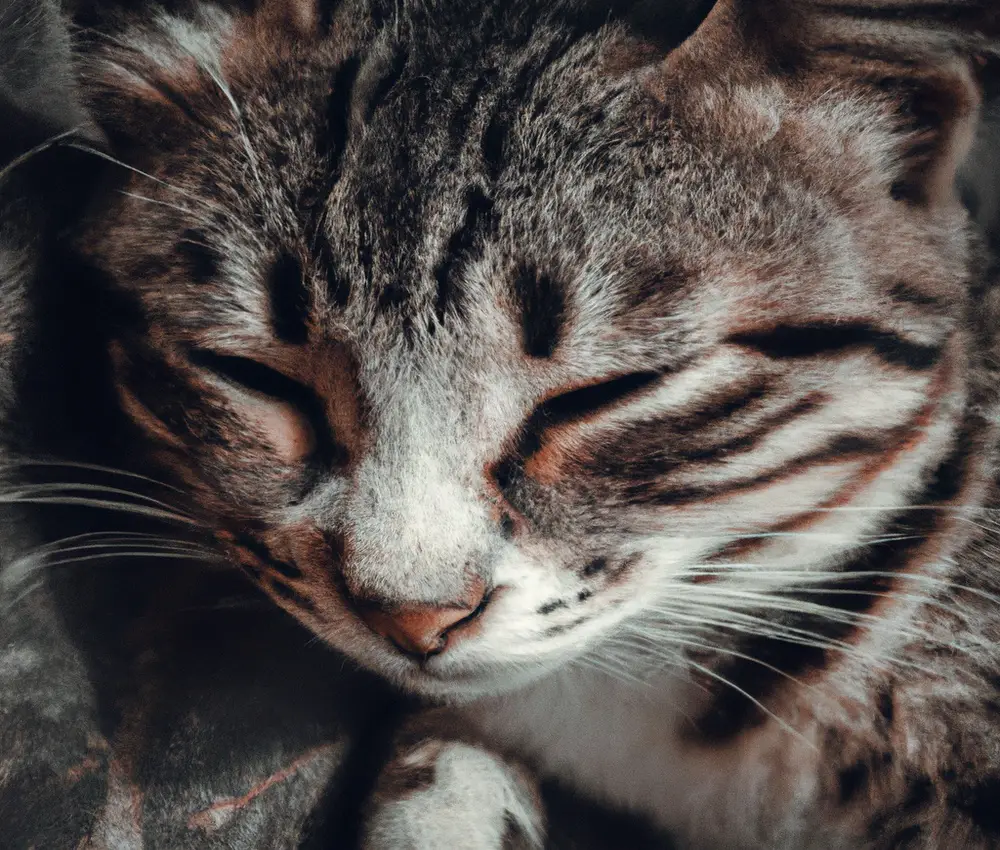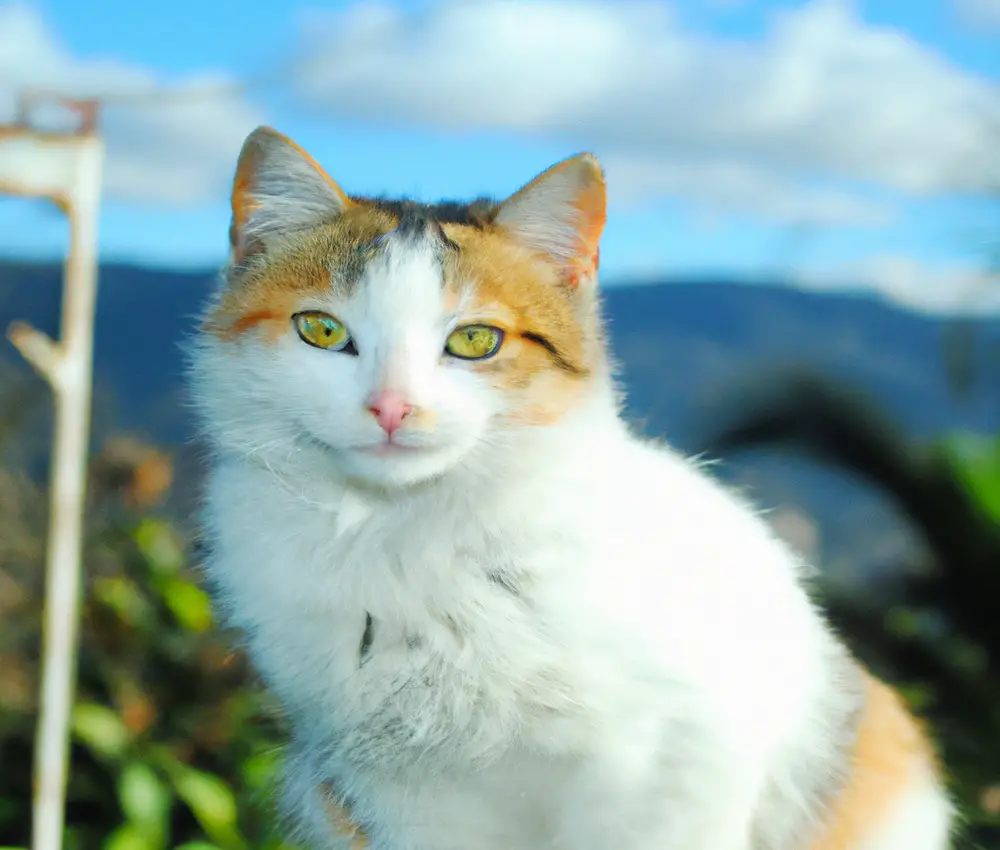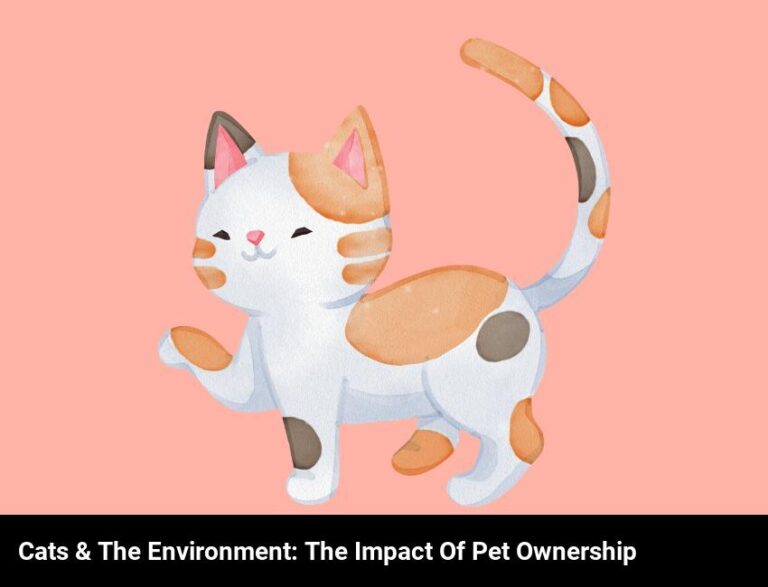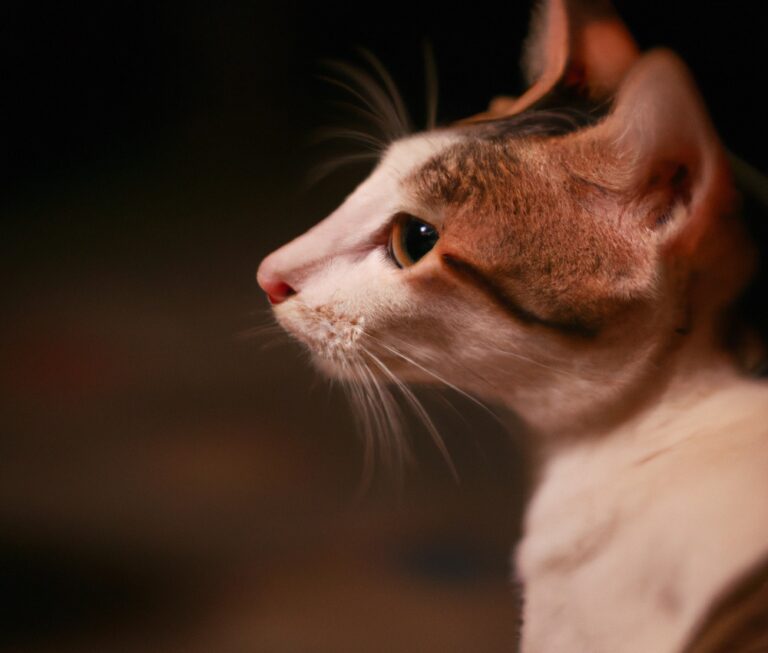Can Cats Have Grey Eyes?
Key Takeaways:
- Grey eye color in cats is relatively rare but does occur in certain breeds.
- The presence of grey eyes in cats is typically genetic and can be influenced by specific genes.
- Grey-eyed cats may also have other unique traits such as coat color patterns or certain health conditions.
- While grey eyes can be captivating, the color alone does not indicate any significant impact on a cat’s health or behavior.
Have you ever wondered if cats can have grey eyes?
Well, let me tell you something – feline eye colors can be just as varied and enchanting as those of humans.
From piercing green to mesmerizing blue, cats have a kaleidoscope of eye colors.
But what about those mysterious grey eyes?
In this article, we’ll explore the world of cat eye colors and dive into the intriguing topic of whether felines can indeed have grey eyes.
So, brace yourself for a captivating journey through the captivating world of cat eye colors.
Buckle up, because it’s going to be quite a ride!
Understanding Cat Eye Colors
Cat eye colors can vary greatly and understanding them is important for cat owners.
The Range of Cat Eye Colors
Cats have a diverse range of eye colors.
Some common colors include green, gold, and blue.
Some cats even have heterochromia, meaning each eye has a different color.
Black cats often have yellow or green eyes.
The color of a cat’s eyes is determined by genetics and pigmentation.
It’s fascinating to see the variety of eye colors in cats, adding to their unique beauty and charm.
What Determines Cat Eye Color?
Cat eye color is determined by genetics. The specific genes responsible for eye color in cats are not completely understood, but researchers have identified a few key factors.
One of these factors is the amount and distribution of melanin, which gives the eyes their color.
Another factor is the presence of specific alleles, or variants of genes, that can influence eye color. These alleles can be inherited from the cat’s parents.
It is also important to note that eye color in cats can change as they age, so what you see as a kitten may not be their final eye color.
Common Cat Eye Colors
Cat eye colors can vary widely, but some of the most common colors include green, yellow, blue, and odd-eyed cats. Cats can also have a condition called heterochromia, where each eye is a different color.
Green and Yellow Eyes in Cats
Green and yellow eyes in cats are two common eye colors that can be seen in various cat breeds. Green eyes are often described as having a yellowish-green tint, while yellow eyes have a vibrant and pure yellow hue.
These eye colors are caused by the presence of pigments in the iris of the cat’s eye.
The intensity of the color can vary depending on the genetics and breed of the cat. Both green and yellow eyes can give cats a captivating and unique appearance.
Blue and Odd-Eyed Cats
Blue and Odd-Eyed Cats Blue-eyed cats are known for their stunning and mesmerizing eyes. The blue color is caused by a lack of pigmentation in the iris, which creates a striking blue hue.
It’s more commonly found in certain cat breeds such as the Siamese, Ragdoll, and Birman.
On the other hand, odd-eyed cats have one blue eye and one eye of a different color, such as yellow or green. This unique condition is due to the presence of a gene that affects iris pigmentation.
Odd-eyed cats are often found in breeds like the Turkish Angora and Turkish Van.
Both blue and odd-eyed cats are highly sought-after for their striking appearance. If you happen to have a cat with these eye colors, consider yourself lucky to be the owner of a truly special feline friend.
Cats with Heterochromia
Cats with Heterochromia, also known as two different colored eyes, are quite captivating.
It’s a genetic trait that occurs in various cat breeds.
One eye could be blue while the other could be green, yellow, or brown.
Some cats even have one eye that is partially colored, adding to their unique appearance.
Heterochromia doesn’t affect a cat’s vision and is simply a cosmetic difference.
It adds an extra touch of charm to these already adorable creatures.

Uncommon Cat Eye Colors
Uncommon cat eye colors include brown and amber eyes, as well as purple and violet eyes.
Grey eyes are also possible in cats.
Brown and Amber Eyes in Cats
Brown and amber are common eye colors in cats. Brown eyes appear as a dark, rich color, while amber eyes have a golden hue.
These eye colors are determined by the concentration of pigments in the iris.
Brown and amber eyes are more commonly found in certain cat breeds, such as Siamese and Abyssinians. It’s important to remember that eye color alone does not indicate a cat’s breed or health.
Cats with Purple and Violet Eyes
Cats with purple and violet eyes are incredibly rare, but they do exist. This unique eye color is a result of a genetic mutation.
The shade can range from a deep purple to a lighter lavender color.
While it may be tempting to believe that purple-eyed cats have special abilities or traits, the truth is that eye color does not impact a cat’s health or behavior. So, if you come across a cat with purple or violet eyes, consider yourself lucky to witness such a rare and beautiful sight!

Can Cats Have Grey Eyes?
Cats can indeed have grey eyes. While blue and green eyes are more common in cats, some cats can have a beautiful shade of grey eyes.
Grey eyes in cats can vary in intensity, ranging from a light silvery-grey to a deeper charcoal grey.
This eye color is often seen in certain cat breeds, such as Russian Blues, Chartreux, and Nebelungs. Grey eyes can add a unique and captivating appeal to a cat’s overall appearance.

Can Cats Have Grey Eyes?
Yes, cats can have grey eyes! Let’s explore the genetic factors and conditions that can influence eye color in cats.
Genetic Factors Influencing Grey Eye Color
Genetic factors play a significant role in determining a cat’s eye color. When it comes to grey eyes, there are specific genes involved.
One of them is called the “dilute” gene, which dilutes the colors of a cat’s coat and eyes.
Another gene, called “blue-eyed dilution,” can also influence the shade of grey. These genetic factors interact in complex ways, resulting in the variation of grey shades seen in cat eyes.
Understanding these genetic factors can provide helpful insights into feline eye color.
Conditions that May Cause Grey Eyes in Cats
Conditions that may cause grey eyes in cats include:
- Age: As cats grow older, the color of their eyes may change to grey due to a natural process called nuclear sclerosis.
- Health Issues: Certain health issues, such as inflammation or disease affecting the eyes, can lead to the development of grey eyes in cats.
- Inherited Traits: Some cat breeds have a higher likelihood of having grey eyes as part of their genetic makeup.
- Eye Injury: Trauma or injury to the eye can cause a change in eye color, including the development of grey eyes.
Eye Health in Cats
How to Maintain Good Eye Health in Cats
Maintaining good eye health in cats is vital for their overall well-being. Here are some tips to help you keep your cat’s eyes healthy:
- Regular vet check-ups: Schedule regular visits to your veterinarian to ensure your cat’s eyes are examined for any potential issues or infections.
- Cleanliness: Keep your cat’s eyes clean by gently wiping away any discharge with a damp cloth. Make sure to use a separate cloth for each eye to prevent cross-contamination.
- Diet and hydration: Provide a balanced diet that includes essential nutrients like antioxidants and omega-3 fatty acids, which can support eye health. Ensure your cat has access to fresh water at all times to prevent dehydration.
- Environmental factors: Protect your cat’s eyes from exposure to irritants like smoke, chemicals, and dust. Additionally, keep them away from potentially hazardous objects or plants that could cause injury.
- Proper grooming: Regular grooming helps prevent eye irritations from hair getting into the eyes. Keep your cat’s fur around the eyes trimmed and be on the lookout for any signs of eye discomfort or redness.
Remember, while maintaining good eye health is crucial, it is important to seek immediate veterinary care if you notice any unusual symptoms such as excessive tearing, squinting, cloudiness, or changes in eye color. Your veterinarian is the best resource for addressing any specific eye health concerns for your cat.
When to Consult a Veterinarian
If you notice any concerning signs or symptoms in your cat’s behavior or health, it’s important to consult a veterinarian.
Here are some situations when it’s best to seek professional help:
- Sudden changes in appetite: If your cat experiences a sudden loss of appetite or starts eating significantly more or less than usual, it could be a sign of an underlying health issue that needs veterinary attention.
- Persistent vomiting or diarrhea: Occasional vomiting or diarrhea might not be too alarming, but if it persists for more than 24 hours or if there is blood in the vomit or stool, it’s time to consult a vet.
- Difficulty urinating: If your cat seems to be straining or shows signs of pain while urinating, it could be a sign of a urinary tract infection or bladder stones. Prompt veterinary care is necessary to prevent any complications.
- Changes in litter box habits: Any sudden changes in your cat’s litter box behavior, such as frequent urination, accidents outside the litter box, or difficulty in passing stool, should be addressed by a veterinarian.
- Lethargy or abnormal behavior: If your cat is unusually tired, unwilling to play, or shows signs of pain or discomfort, it’s essential to have them checked by a vet to identify the underlying cause.
FAQs about Cat Eye Colors
Are grey-eyed cats more prone to vision problems?
Yes, grey-eyed cats can be more prone to vision problems. This is because the pigment that gives their eyes their unique color can also cause certain abnormalities in the eye structure.
These abnormalities can affect their vision and increase the likelihood of developing eye conditions such as glaucoma or cataracts.
Regular check-ups with a veterinarian and early detection of any potential problems are important for maintaining their eye health. Keeping their environment safe and providing proper nutrition can also help minimize the risk of vision issues for grey-eyed cats.
Can a cat with one green and one grey eye see differently?
A cat with one green and one grey eye may have a condition called heterochromia.
While it gives them a unique and striking appearance, it doesn’t typically affect their vision.
Cats rely more on their excellent vision and other senses rather than eye color.
So, the difference in eye color shouldn’t cause any significant difference in their ability to see.
Cats are amazing creatures with keen eyesight, regardless of the color of their eyes!
Final Verdict
Cats can indeed have grey eyes, although it is less common compared to other eye colors. The color of a cat’s eyes is determined by genetic factors and can vary greatly.
Grey eyes are often associated with certain cat breeds but can also occur in mixed breeds.
It is important to note that eye color does not necessarily indicate any health problems in cats. However, maintaining good eye health is crucial for all cats.
If you notice any signs of eye problems, it is recommended to consult a veterinarian for proper diagnosis and treatment.
Overall, understanding a cat’s eye colors can provide valuable insights into their genetic makeup and overall well-being.







